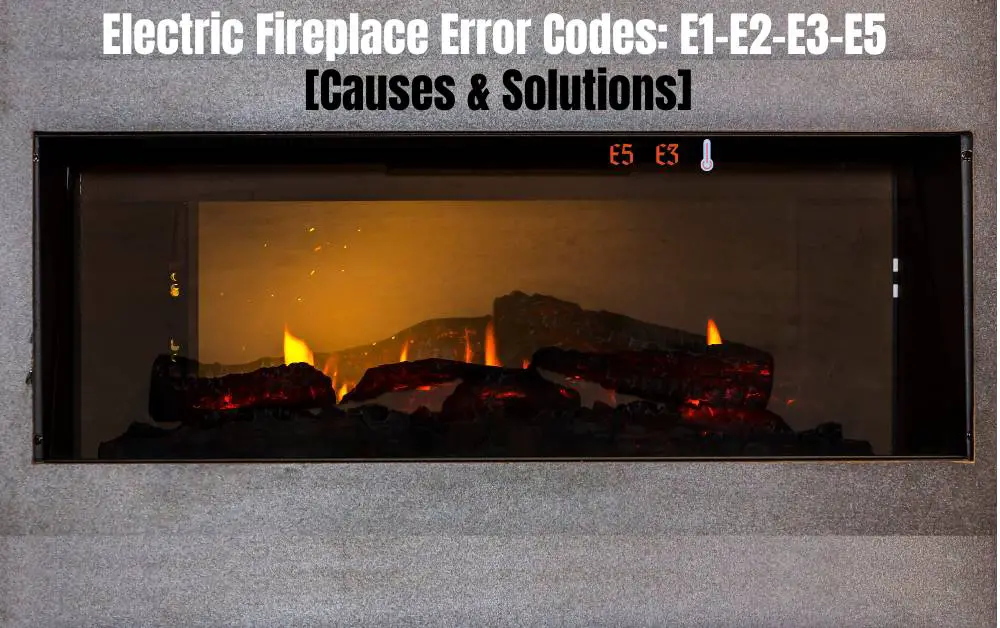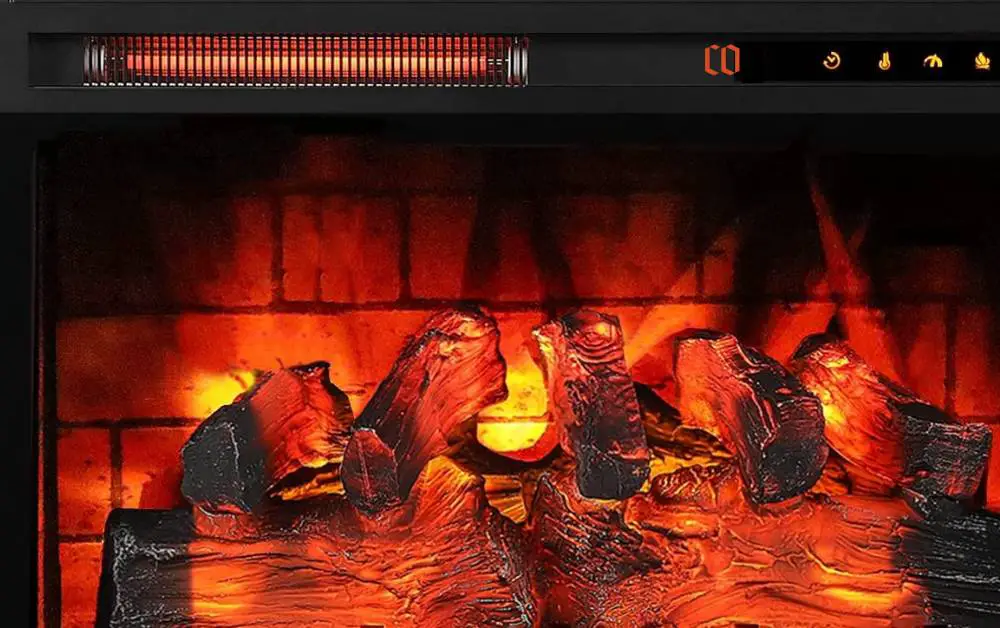Converting a traditional wood-burning fireplace into an electric one is no longer a complex or expensive task. In fact, with the right tools and a step-by-step approach, you can upgrade your fireplace in just a few hours. Beyond convenience, electric fireplaces eliminate the constant need to haul logs, clean out ashes, or worry about smoke filling the room.
In this guide, we’ll walk you through everything—from why you should consider the switch, to the exact steps to make it happen, and even the costs you can expect.
Whether you’re looking for a cozy living room upgrade or want a safer alternative for your family, this conversion could be the best home improvement decision you make.
Understanding the Basics of Conversion
Before diving into the conversion process, it’s important to understand exactly what it means to replace a wood-burning unit with an electric one. At its core, the process involves installing an electric fireplace insert inside your existing fireplace opening. These inserts are designed to mimic the look and feel of a real fire while operating on electricity instead of wood.
There are several types of electric inserts:
- Log Set Inserts – A simple set of logs with glowing embers that you place inside the fireplace.
- Plug-In Inserts – A full unit that slides directly into the firebox and plugs into a standard outlet.
- Built-In Inserts – More permanent units that may require professional installation and hardwiring.
Unlike wood-burning fireplaces, electric models don’t require chimneys, venting, or constant fuel. They run on standard household power and can produce heat instantly with the flip of a switch. Some even come with advanced features like flame color adjustments, remote controls, and timers.
From a cost perspective, electric fireplaces are far cheaper to operate than wood-burning ones. They also save you money on chimney maintenance, firewood, and cleaning supplies.
Preparing for the Conversion
Preparation is key to a successful conversion. Before buying your insert or pulling out tools, take time to thoroughly inspect your fireplace.
- Inspect the Existing Fireplace
Check for cracks, damages, or loose bricks inside the firebox. Even though you won’t be burning wood anymore, a stable structure is essential for securely holding your new electric insert. - Clean and Remove Ashes
Remove any leftover wood, ash, or soot. Vacuum out the firebox if necessary to create a clean, dust-free environment. This not only makes installation easier but also improves safety. - Check the Chimney and Flue
Even though you won’t need the chimney for ventilation, it should still be inspected and sealed off to prevent drafts. A chimney balloon or flue sealer can be installed to stop cold air from leaking inside. - Measure the Firebox
Measuring the width, height, and depth of your existing fireplace is crucial. Without accurate measurements, you risk purchasing an insert that doesn’t fit properly.
Once these steps are done, you’ll have a clean, safe, and properly measured space ready for the transformation.
Tools and Materials You’ll Need
The good news is that you don’t need a contractor’s toolbox to convert your fireplace. Most installations can be done with a handful of common household tools and some basic supplies.
Here’s what you’ll typically need:
- Electric Fireplace Insert – The main unit that will replace your wood-burning area.
- Power Source – Either a nearby electrical outlet or wiring for a hardwired installation.
- Screwdriver Set – For assembling trim kits and securing parts.
- Tape Measure & Level – To ensure a perfect fit and alignment.
- Caulk or Insulation – To seal gaps and prevent drafts.
- Trim Kit or Mantel (Optional) – For a polished, finished appearance.
- Safety Gear – Gloves, goggles, and a dust mask when cleaning and preparing the fireplace.
While the installation itself is straightforward, electrical work may require a professional. If your insert is designed for hardwiring, hiring a licensed electrician is not just recommended—it’s a must for safety and compliance with building codes.
How to Convert a Wood Burning Fireplace to Electric: Step-by-Step Guide
- Step 1 – Choose the Right Electric Insert
- Step 2 – Preparing the Fireplace Opening
- Step 3 – Electrical Setup
- Step 4 – Installing the Electric Insert
- Step 5 – Adding Finishing Touches
Step 1 – Choose the Right Electric Insert
The first and most important step in your conversion journey is selecting the right electric fireplace insert. Not all fireplaces are created equal, and neither are inserts, so you need to make sure the unit you choose matches your needs, preferences, and the dimensions of your existing fireplace.
There are three primary types of electric inserts to consider:
- Log Set Inserts – These are the simplest and most affordable option. Essentially, they’re a realistic set of glowing logs with LED flames that sit inside your existing firebox. They’re perfect for those who want a quick, low-cost conversion without major installation.
- Plug-In Electric Inserts – These units look like a full fireplace box with glass fronts and realistic flames. They slide directly into the firebox and plug into a nearby wall outlet. They offer more heating power and flame effects compared to basic log sets.
- Built-In Electric Inserts – If you want a sleek, permanent solution, built-in models are ideal. They may require modifications to your fireplace opening and often need to be hardwired by a professional. These provide the most realistic flames and heating power.
When choosing your insert, you’ll also need to consider the size. Measure your firebox carefully—height, width, and depth. An ill-fitting insert not only looks awkward but can also cause efficiency issues. Additionally, think about the features you’d like. Some inserts come with remote controls, programmable timers, and even smart-home integration.
Finally, don’t forget the heat output. Most electric fireplaces provide anywhere from 4,000 to 5,000 BTUs of supplemental heat, which can warm up a room of about 400–500 square feet. If you want a purely decorative option without much heat, a smaller unit will do.
Step 2 – Preparing the Fireplace Opening
Once you’ve chosen your insert, the next step is to get the fireplace opening ready. Unlike wood-burning fireplaces, electric inserts don’t need a vent or chimney, but the firebox must be prepared properly for safe and efficient installation.
- Seal the Chimney – Since you won’t be using the chimney anymore, it’s best to seal it off to prevent drafts and heat loss. A chimney balloon or draft stopper is a quick fix. For a more permanent solution, use insulation or masonry sealing.
- Block Airflow – If you leave the flue open, cold air from outside can seep in, making your electric fireplace less efficient. Blocking the flue ensures that all the heat generated stays inside the room.
- Create a Stable Surface – Make sure the base of the firebox is flat and sturdy enough to support the insert. If the surface is uneven, use a leveling compound or fireproof board to create a solid foundation.
- Add Insulation (Optional) – Some homeowners choose to insulate the firebox walls before inserting the unit. This can help improve efficiency and prevent unwanted heat loss.
By taking the time to prepare the opening properly, you’ll ensure that your electric fireplace runs smoothly, looks professional, and saves energy in the long run.
Step 3 – Electrical Setup
Electric fireplaces may be low-maintenance, but they still need a proper power source. The electrical setup is where many homeowners run into challenges, so it’s worth going over the options carefully.
- Plug-In Models
Most electric inserts are designed to simply plug into a standard 120-volt wall outlet. If your fireplace is near an outlet, this is the easiest option. Just make sure the outlet is on a dedicated circuit and not overloaded with other appliances. - Hardwired Models
Some built-in electric inserts require a direct hardwired connection for safety and efficiency. In this case, you’ll need a licensed electrician to run wiring into the firebox area. This adds to the cost but results in a cleaner, more permanent look. - Extension Cords – Proceed with Caution
While it may be tempting to use an extension cord if the outlet isn’t nearby, it’s not recommended unless the manufacturer specifies that it’s safe. Extension cords can overheat and pose a fire hazard, especially with heating appliances. - Safety Considerations
Always ensure your wiring meets local building codes. Don’t overload circuits, and avoid plugging your fireplace into power strips. A direct, dedicated outlet is always the safest choice.
If you’re unsure, consult an electrician. While it might add a few hundred dollars to your project, it’s worth it for the peace of mind and safety of your home.
Step 4 – Installing the Electric Insert
Now comes the exciting part—installing your electric fireplace insert. This step is surprisingly simple compared to the preparation work.
- Position the Unit – Carefully slide the electric insert into the firebox opening. Be gentle to avoid scratching the unit or damaging your fireplace.
- Level the Insert – Use a carpenter’s level to ensure the unit sits straight. An uneven installation can affect both the look and function of your fireplace.
- Secure in Place – Some inserts come with brackets or screws to secure them into the firebox. Follow the manufacturer’s instructions to make sure it’s safely fastened.
- Plug It In or Connect Wiring – Depending on your model, plug it into the outlet or have an electrician connect it to the hardwiring.
- Test the Unit – Before adding trim or decorations, turn on the fireplace to check that everything works. Make sure the flames, heater, and remote functions operate correctly.
Once your insert is installed, the transformation is nearly complete. You’ll already see how dramatically it changes the look and feel of your living space.
Step 5 – Adding Finishing Touches
The installation might be done, but the finishing touches are what make your new electric fireplace truly shine.
- Trim Kits – Many inserts come with trim kits that cover gaps between the insert and the firebox edges. These give your fireplace a polished, built-in look.
- Mantel Upgrades – If you want to completely refresh the appearance, consider adding or updating a mantel. Modern designs can turn your fireplace into a stunning centerpiece.
- Decorative Options – Electric fireplaces often allow you to customize the look inside the firebox. You can choose glowing logs, crystals, or even ember beds that change colors.
- Smart Features – Some models come with Wi-Fi or Bluetooth connectivity, letting you control the fireplace with your smartphone or voice assistant.
By taking the time to finish the details, you’ll transform your once-traditional wood-burning fireplace into a modern, stylish feature that’s both practical and beautiful.
Costs of Conversion: Wood Burning Fireplace to Electric
One of the most common questions homeowners ask before making the switch is: How much will it cost to convert my wood-burning fireplace to electric?
The answer depends on several factors, including the type of electric insert you choose, whether you’ll need professional installation, and what finishing touches you decide to add.
Here’s a rough breakdown of potential costs:
| Item | Estimated Cost Range | Notes |
|---|---|---|
| Electric Log Set Insert | $150 – $500 | Basic option, easiest to install |
| Plug-In Insert | $300 – $1,200 | More realistic flame effects, supplemental heat |
| Built-In/Hardwired Insert | $800 – $2,500 | Premium look, professional installation required |
| Chimney Sealing | $100 – $300 | Permanent sealing may cost more |
| Electrical Work (if needed) | $200 – $600 | For hardwired models or outlet installation |
| Trim Kit/Mantel | $100 – $800 | Optional finishing touch |
Total Estimated Cost:
- DIY with log set insert: $200 – $600
- Plug-in insert with minimal upgrades: $500 – $1,500
- Hardwired built-in conversion: $1,200 – $3,500
While this might sound like a significant investment, remember that electric fireplaces save you money in the long run. You’ll cut out expenses for firewood, chimney cleaning, and repairs. They’re also cheaper to run than wood-burning or gas fireplaces, costing only about 8–12 cents per hour for flame effects and around 15–25 cents per hour with heating.
Common Mistakes to Avoid
Like any home improvement project, fireplace conversions can go wrong if you’re not careful. Here are the most common mistakes homeowners make—and how to avoid them:
- Buying the Wrong Size Insert
This is the biggest mistake. If the insert doesn’t fit your firebox properly, you’ll either be left with ugly gaps or a unit that simply won’t fit at all. Always measure multiple times before buying. - Not Sealing the Chimney Properly
Forgetting to seal the chimney can cause drafts, cold spots, and higher energy bills. Even though your fireplace is now electric, air leaks can make your home less comfortable. - Overloading Circuits
Plugging your insert into an outlet that already powers multiple appliances can trip breakers or cause overheating. Use a dedicated circuit whenever possible. - Ignoring Aesthetic Details
Some people stop after installation and forget the finishing touches. Trim kits, mantels, and decorative features can dramatically improve the look of your new electric fireplace. - Skipping Professional Help When Needed
While plug-in models are easy for DIYers, hardwired units really do require an electrician. Cutting corners here can create safety hazards.
By being aware of these pitfalls, you can avoid unnecessary headaches and ensure a smooth, successful conversion.
You May Also Like To Read:
Affiliate Disclosure: Fireplaceadviser.com is a participant in the Amazon Services LLC Associates Program. We may earn a commission when you click on certain links on this site and purchase.

Hello!! I am Jamal Khan. I often fix my home electric heaters and gas stove problems and research the common issues in the heating units to improve my knowledge and expertise. The aim of establishing fireplaceadviser.com is to share my expertise and knowledge with my audience.












